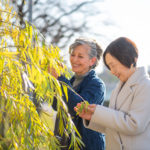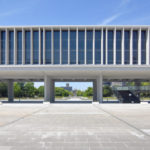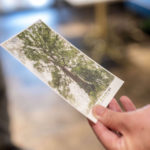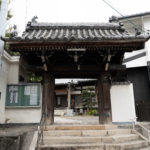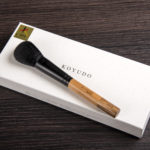Think about peace from atomic bombed buildings and trees
If you look at the buildings and trees that survived the atomic bombing, you can see the historical facts and the devastation.
Before the bombing, the area of the Peace Memorial Park was called Nakajima district and was one of the city’s downtown. However, these areas, which were located very close to the hypocenter of the bombing, were devastated by the atomic bomb.
Atomic Bomb Dome (Hiroshima Prefectural Industrial Promotion Hall)

The distinctive green dome had been familiar to citizens, but the building was destroyed and burned down, and most of the people in the building died by A-bombing. This building was about 160 meters southeast of the hypocenter. After the war, it came to be called the “Atomic Bomb Dome.” In December 1996, it was registered as a UNESCO World Cultural Heritage Site as a historical witness of the horrors of atomic bombing, and as a symbol of the oath calling for the abolition of nuclear weapons and lasting peace.
Address: 1-10 Otemachi, Naka ward, Hiroshima city
The Rest House of Peace Memorial Park (Fuel Hall)

Built as Taisho-ya Kimono Shop, the modern reinforced concrete shop was an innovative building at the time. It was used as a fuel hall at the time of the bombing and burned down except for the basement, but kept its form as a building. After the repairs, it served as a base for urban reconstruction. It is currently used as a rest house in the Peace Memorial Park and was renovated in July 2020.
Address: 1-1 Nakajimacho, Naka ward, Hiroshima City
Phone No. : +81(0)82-247-6738
Opening hours: 8:30 – 19:00 (August 1 to August 31) *August 5th: open until 20:00, 6th: 7:30 – 20:00
8:30 – 18:00 (March 1 – November 30 (excluding August)
8:30 – 17:00 (December 1 – end of February)
Open 365 days
“Aogiri and Crinum lily”: Inside Peace Memorial Park

Aogiri (Chinese parasol tree)

Crinum lily
Aogiri was exposed to radiation in the garden of the former Hiroshima Post and Telecommunication Bureau, 1300 meters away from the hypocenter. It is said that in the following year, new buds sprouted and that encouraged people. Crinum lily was also exposed to atomic bomb at the former Hiroshima Girls’ Commercial High School, 2,200 meters from the hypoicenter. A month after the bombing, a former Japanese Army soldier found new leaves growing from a burnt bulb and brought them back to Kamakura in Kanagawa Prefecture to raise them. Some were transplanted to its current location of the park in 1969.
Address: 1 Nakajimacho, Naka ward, Hiroshima city (Inside Peace Memorial Park)
“Arakashi”: In the Honkawa Elementary School Peace Museum

Honkawa Elementary School Peace Museum

Arakashi(Ring-cupped oak)
The reinforced concrete school building was completely destroyed in the atomic bombing, leaving only its outline. After the bombing, it was used as a first-aid station for the victims, and today, part of the school building is used as a peace museum. In August 2012, a ring-cupped oak was transplanted to the school, which was exposed to atomic bomb in Funairi, Naka Ward, Hiroshima, 2,180 meters from the hypocente.
Address: 1-5-39 Honkawacho, Naka ward, Hiroshima city (Honkawa Elementary School)
Phone No.: +81-(0)82-231-8020 (Direct dial of Peace Museum)
Opening hours: 9:00 – 17:00 (Last Admission: 16:40)
Closed: December 28 to January 4 of the following year
*If you would like to visit the museum, please make a reservation by phone in advance. For a group, you need to apply by “visitor request form” on the website of Honkawa Elementary School.
Website of Honkawa Elementary School
http://cms.edu.city.hiroshima.jp/weblog/index.php?id=e0899
*Only Japanese is available
Please download the visitor request form, fill in the necessary information, and apply by fax.
<Route Map>
Reference books for this article

Hiroshima’s ‘Monumental Witnesses’: Guidebook for A-Bombed Buildings and Trees
Hiroshima City (published in 2019)
Price: 1,000 yen (tax included)
Only Japanese is available
Introducing Peace Study Projects
Cooperation with local companies to convey the importance of life through hibaku-jumoku, trees that survived the atomic bombing
JMS Co., Ltd. supports the Green Greetings Project. The objective of the project is to protect trees that survived the atomic bombing in Hiroshima, to pass them down to generations to come to disseminate information about the existence of these trees.
Cooperation with local companies to convey the importance of life through hibaku-jumoku, trees that survived the atomic bombing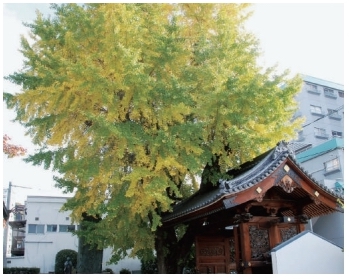
Peace Tourism (Hiroshima City)
This is for those who are interested in peace-related facilities in Hiroshima City. The appearances of the facilities before the dropping of the atomic bomb and some stories about the recovery from the ashes of the war are introduced.
Exploring “A Longing for Peace”
Tags associated with this article



